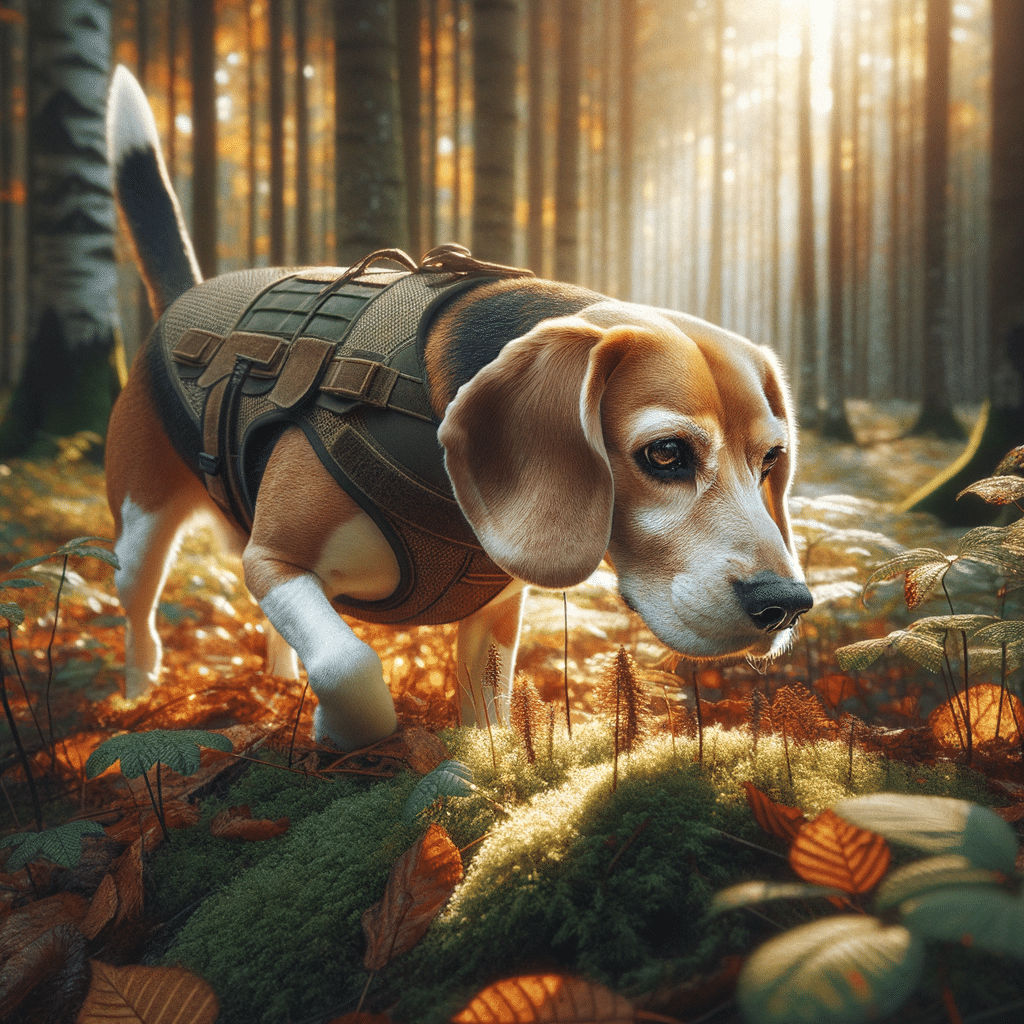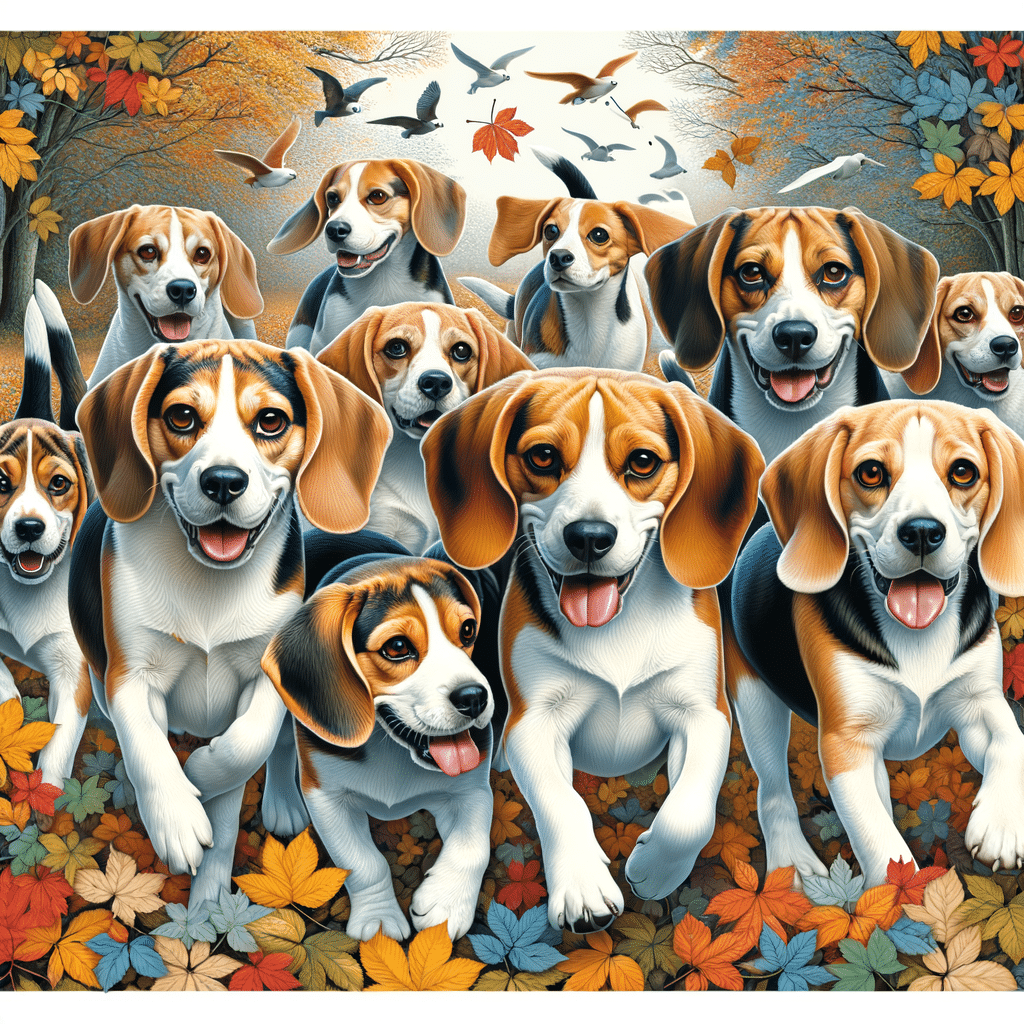Training a beagle requires patience, consistency, and understanding of the breed’s traits. These lively dogs, known for their keen sense of smell and trail-following abilities, are descendants of hunting dogs. These traits make them naturally energetic and intelligent.
In This Article
Socializing beagles from an early age with other dogs and people is essential to bringing out their friendly nature. It’ll also make the training process a positive and rewarding experience. Read on to learn how to train a beagle.
A beagle thrives on companionship and can quickly become a cherished family dog. Initiating house training around eight weeks old sets the stage for a well-adjusted pet. But even adult beagles can adapt to a new training routine later in life. Due to their inherent curiosity and self-reliance, training a beagle requires a clear structure and engaging methods to keep their attention.
Highlights
- Beagles are energetic and require early socialization and consistent training.
- Positive reinforcement and patience are crucial in beagle training.
- Both puppies and adult beagles can be successfully house-trained with dedication.
Understanding Your Beagle
When training a beagle, one must consider their unique history, temperament, and characteristics. These factors affect their behavior and the best approach for effective training.
History and Temperament
Beagles have a rich history as hunting dogs. They were bred for their keen sense of smell and tracking abilities. Because of their sharp instincts and persistence, they were primarily used for rabbit hunting.
Their temperament is often described as friendly, curious, and determined. Understanding these traits can help you pick the best strategies to train your beagle pup.
Physical and Mental Characteristics
Beagles are medium-sized dogs known for their high energy levels and sturdy build. They have an impressive sense of smell, placing them amongst the top scent hounds. This strong sense of smell means that new scents may sometimes distract beagles.
Therefore, be patient during training. Beagles are also intelligent and curious, traits that need mental stimulation to prevent boredom and unwanted behaviors like chewing or biting.
Socialization and Family Integration
Socialization is essential in a beagle’s life. They are natural pack animals, making them good with other dogs and excellent family companions. Early socialization with various people, pets, and environments can bring out their social nature and reduce the likelihood of aggression or fearfulness.
Frequent interactions help beagles learn proper manners and prevent developing problematic behaviors. Integrating a beagle into a family setting involves consistent training to bring out their social personality and positively direct their high spirits and energy.
Basic Training Principles
When training a beagle puppy, use proven techniques such as establishing a routine, positively reinforcing desired behaviors, and setting boundaries with cue words for effective learning.
Establishing Routine and Consistency
A rigorous and consistent schedule is crucial for beagle training success. They thrive on routine, which helps them understand what is expected. Consistency in training sessions, feeding times, and walks instills discipline and reduces confusion.
For example, house training should follow a strict schedule, taking the beagle outside at the same times daily, especially after meals and naps, to develop predictable habits.
Positive Reinforcement Techniques
Positive reinforcement training uses rewards to encourage good behavior. When your beagle performs a desired action, immediate praise or a treat reinforces that behavior. This method builds a strong bond between you and the dog. Use treats wisely and sparingly to maintain the beagle’s focus and prevent overfeeding.
- Rewards: Use a variety of treats to maintain interest.
- Timing: Reward immediately to reinforce the behavior.
- Praise: Combine treats with verbal praise and affection.
Setting Boundaries and Using Cue Words
Setting boundaries with your beagle puppy is necessary for developing self-control and helping them understand their limits. Use clear and simple cue words for commands, such as “Sit,” “Stay,” or “Come,” and ensure that every family member uses the same words to avoid confusion. Enforcing these boundaries consistently will ensure that the beagle respects and follows them.
- Cue words: Select short, distinct words for commands.
- Consistency: Always use the same words and actions for each verbal command.
- Self-control: Reward patience and calmness to promote self-control.
By sticking with these basic training principles, you can effectively guide your pets towards becoming well-behaved companions.
Essential Commands and Skills
Training a beagle requires patience and consistency. The focus should be on mastering basic commands, house training techniques, and outdoor activities such as leash training for walks and exercise.
Mastering Basic Commands
To establish good behavior and communication with your beagle, start with basic commands like “Sit,” “Stay,” and “Come”. You can teach your dog to sit by holding a treat close to their nose and lifting it, causing the dog to lower into a sitting position.
You can teach them to stay by instructing the dog to hold its position until released, which increases impulse control. “Come” is a vital recall command for the dog’s safety, which you can practice by increasing distance and introducing distractions.
- Sit: Essential for starting any training session.
- Stay: Builds patience and discipline.
- Come: Crucial for the dog’s safety.
Crate and Potty Training Essentials
Crate training creates a secure environment for your beagle pup by providing them with a safe personal space. Introduce the crate gradually and associate it with positive experiences like meals and treats. For potty training, establish a routine and identify a designated area where the puppy can go potty. Remember to reward the dog for correct behavior.
Crate Training Basics
- Introduce the crate gradually.
- Ensure the crate is comfortable and feels safe.
Potty Training Tips
- Maintain a consistent schedule.
- Use a designated area or puppy pads for consistency.
Leash Training and Exercise
Leash training is crucial for a beagle’s safety, teaching them to walk without pulling. Start by ensuring the dog is comfortable wearing a collar and leash. Practice indoors first, then proceed to quiet outdoor areas. Regular exercise cannot be overstated; it helps to manage your beagle’s energy and prevents boredom-related behaviors.
Leash Training Techniques
- Begin indoors in a distraction-free setting.
- Gradually introduce outdoor settings with more stimuli.
Exercising Tips
- Daily walks are critical for mental and physical health.
- Introduce playing fetch as a fun way to exercise.
Advanced Training and Behavioral Issues
Training a beagle requires patience and consistency, particularly when addressing their stubbornness and need for mental stimulation. They can show independence, which poses unique challenges. But with the right strategies, it’s possible to manage anxiety and barking tendencies, ensuring a well-behaved companion.
Dealing With Stubbornness and Independence
Beagles are known for their strong will and independent nature, traits that can complicate training. To address this stubbornness, use positive reinforcement consistently. Providing rewards when they comply with your commands can build confidence and reinforce desired behaviors. Maintaining a firm and calm demeanor during training sessions helps establish your role as the leader and encourages a more cooperative attitude in the dog.
Managing Barking and Anxiety
The tendency to bark is instinctual in beagles, often because of anxiety or a need for attention. To tackle excessive barking, first, establish a calm and safe space for your beagle to reduce anxiety levels. Training tips include teaching commands such as “Quiet” and positive reinforcement for following the command. It’s crucial to avoid unintentionally reinforcing barking by giving attention or scolding, which your dog can mistake for positive attention.
Interactive Play and Mental Stimulation
Mental stimulation is vital for a beagle’s development and overall behavior. Interactive play, such as fetch games, can keep a beagle’s mind active and reduce the likelihood of destructive behaviors. Providing a variety of chew toys can also offer a constructive outlet for a beagle’s energy. Regular training exercises that mentally challenge the dog will help keep its mind sharp and strengthen the bond between you and your pet.
Frequently Asked Questions
Training a beagle requires patience, consistency, and understanding of their unique characteristics. Here are some specific strategies to address common training questions for beagle owners.
What are effective techniques for obedience training in beagle puppies?
Obedience training for beagle puppies should start early, using positive reinforcement methods. They respond well to treats and praise when learning basic commands like “Sit,” “Stay,” and “Down.” Short, engaging sessions help maintain their attention.
Can you offer guidance on potty training for a beagle?
Potty training a beagle can start as early as eight weeks old by establishing a routine and taking them outside frequently, especially after meals and naps. Don’t punish accidents but rather reward successful outdoor elimination.
How do you teach a beagle to respond to recall commands like “Come”?
Teaching a beagle the “come” recall command is critical for its safety. To establish recall, start in a distraction-free environment and gradually increase the distance and level of distractions. Always reward your dog for obeying the command.
What is the best way to reduce excessive barking in beagles?
To reduce excessive barking in beagles, first identify the trigger. Barking can often be managed by removing or getting your dog used to the trigger. Additionally, consistent training commands like “Quiet” should be used, paired with positive reinforcement when obeyed.
What methods are recommended for bite inhibition training in beagle puppies?
Teach young beagles bite inhibition early on. If they nip or bite during play, a sharp yelp followed by ending the play session teaches them the consequence of rough play. Offer them appropriate chew toys to redirect their biting instincts.
How can you effectively train a Beagle to utilize its tracking abilities?
To train a beagle’s tracking abilities, start with simple scent games encouraging them to follow a trail of treats. As their skill develops, they introduce more complex trails with different scents, always praising their success in finding the trail’s end.






